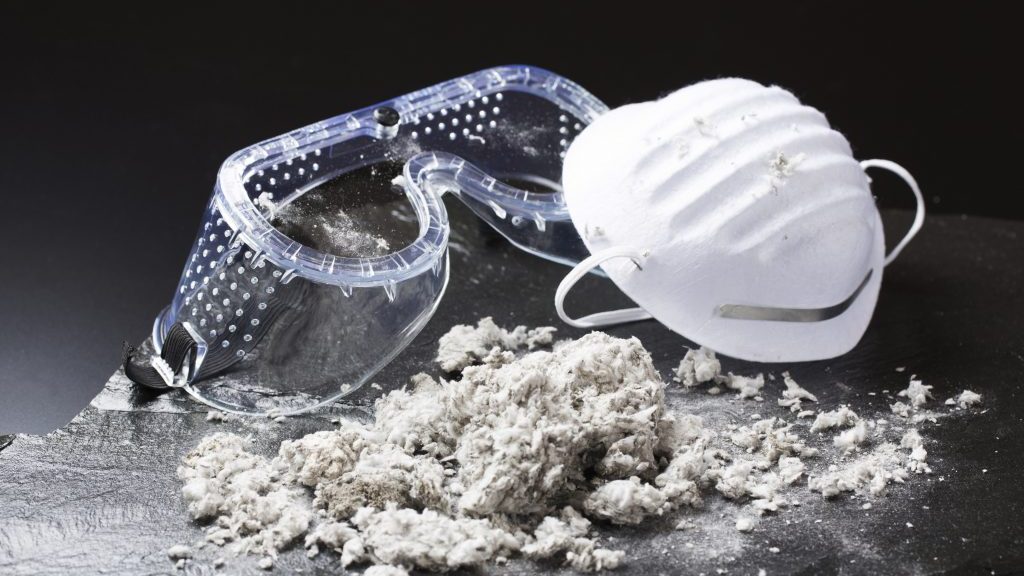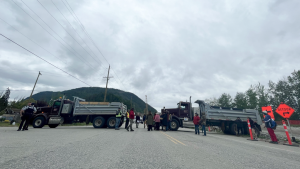A B.C. Supreme Court (BCSC) has granted an injunction to the Workers Compensation Board (WCB), doing business as WorkSafeBC, barring a long-time asbestos removal company and its owner from participating in the industry and adding to its list of companies or individuals that are now behind a legal barricade.
The BCSC injunction prohibits asbestos removal contractor Mike Singh and his company Seattle Environmental Consulting Ltd. from carrying on “as an employer, employee, contractor, or qualified person in the asbestos abatement or inspection industry for an indefinite period or until further order of the court.”
The order becomes effective on April 15, 2019 and until then Singh must abide by a previous 2012 BCSC order that he adhere to WCB requirements.
The ruling has prompted the BC Insulators Union and BC Federation of Labour to call for immediate action by the B.C. government to provincially license asbestos removal firms as both claim the banned company broke rules repeatedly and has not paid fines of $635,000 in nine years.
“Since December of 2010, this business has also received 29 penalties in the combined amount of approximately $635,000. The injunction is based not on these administrative penalties, but on evidence of the likelihood of Mr. Singh breaching the (Occupational Health and Safety) Regulation and the resultant significant threat to workers,” said Al Johnson, WorkSafeBC’s vice-president of prevention services.
WorkSafeBC, in an email, said they are looking at ways to collect the outstanding fines.
BCSC Justice Francesca Marzari said in her reasons-for-judgment that she granted the injunction as a preventative measure to ensure worker safety, although she acknowledged Singh complied with many of the WCB remedial orders issued.
“However, while these remedies were often adequate to obtain compliance with these individual breaches, they were not sufficient to prevent them from the outset or from reoccurring. The number of breaches, and the repetitive nature of many of them, suggests that individual compliance orders made only when Seattle or Mike Singh are caught breaching the (Workers Compensation) Act and Regulation has not dissuaded Seattle or Mike Singh from continuing to provide abatement services in a way that repeatedly gives rise to significant safety concerns,” she said.
The injunction is the latest volley in running court battles Singh and the WCB have engaged in.
Seattle is responsible for repeated and egregious breaches of the Act and Regulation,
— Justice Francesca Marzari
B.C. Supreme Court
In the current case, the WCB relied on voluminous affidavit materials totalling over 1,500 pages, canvassing 51 individual allegations of breaches of the act and regulation at 21 different worksites over the course of four years. Singh and respondents also provided affidavits, including exhibits, totalling well over 1,000 pages.
In addition, over 500 pages of cross-examination transcripts were produced.
Justice Marzari found “reasonable grounds to believe that Seattle has breached the Act or Regulation constituting 21 distinct breaches at 11 different worksites” and that permanent relief in the form of the injunction barring Singh from the industry is reserved for “egregious and repeat violators of the Act or Regulation where a more specific injunction to comply with one or more provisions of the Act will not be sufficient.”
Justice Marzari acknowledged inspectors do regularly find deficiencies at worksites and give orders directed at remediation, but Singh and Seattle had previous experiences with violations and had a court order stipulating compliance.
“Seattle and Mike Singh are in the fairly unique position of having been ordered by the Court in 2012 to comply with the Act and Regulation. In addition, they have already been found to have been in contempt of the 2012 Order in 2013,” the justice said.
Singh and Seattle argued this was not an egregious case and that they complied with all direct orders they received from inspectors.
“They say that the deficiencies found at Seattle’s worksites were not any more egregious than others. Furthermore, they say that due to the Board’s history with the respondents, they have been unfairly targeted for inspections and breaches that in other cases would not have been pursued beyond compliance,” the justice said.
But, the justice did not agree.
“Seattle is responsible for repeated and egregious breaches of the Act and Regulation, including significant failures to properly dispose of asbestos waste, to ensure adequate containment during high risk work, and to provide safe supervision of workers. In two cases there were reasonable grounds to believe that Seattle issued clearance letters before all asbestos had been removed.”
Singh and Seattle join two other individuals and companies that the WCB has obtained injunctions against in the past two years who were involved in the asbestos industry. They are Michael David Williamson, who engaged in the asbestos abatement industry and the hazardous materials inspection industry, and C-Best Environmental Ltd. and its principal Ramnik Dhaliwal, who carried out asbestos abatement or hazardous materials inspections.
While Singh’s son Shawn was originally named in the suit, the justice found only one instance of non-compliance where he did not describe potential hazardous material in accordance to standards required by current regulations. Shawn remedied the action immediately.
“I do not consider that the single breach warrants an order pursuant to s. 198(1) (e) of the Act prohibiting Shawn Singh from participating in the asbestos industry for an indefinite period or any period of time,” the justice said. She also found Shawn had not violated the 2012 court order to comply with the regulations and was not in contempt.
She did, however, find Seattle and Singh, as the principal and directing mind, to be in contempt for the second time of the 2012 order to comply.
“I have found Seattle to be in contempt on seven counts constituting six distinct breaches of the Act and Regulation at four different worksites,” she said. “Some of these findings are particularly serious ones giving rise to significant concerns for worker safety, including the premature issuance of a letter of clearance authorizing unprotected workers to proceed to demolish a building that had not been completely abated.”
The justice convened the court proceedings for 30 days for both sides to address the issue of a penalty on the second charge of contempt.
“I also ask that the parties provide submissions on the extent that the breaches, and therefore contempt was purged through compliance with administrative orders. The parties may also wish to reference the amounts of any administrative penalties already imposed for the breaches that are the subject of contempt findings, and whether these have been paid.”
The loss in court is another one for Singh in his years of troubles with the WCB.
In 2017, Singh tried unsuccessfully to sue the WCB, three of its lawyers, its president and CEO and seven of its directors.
At that time, Justice Nigel Kent said in reasons-for-judgement dismissing the claim: “Since 2013 the plaintiffs have initiated, either individually or in various combinations, 12 other legal proceedings against the Board, its directors, officers, employees or lawyers. Two claims were brought in the Provincial Court of British Columbia; a complaint was made to the British Columbia Human Rights Tribunal (‘BCHRT’); a judicial review occurred of the BCHRT decision dismissing that complaint; an appeal took place of the judicial review of the BCHRT decision; two judicial review decisions have been issued; and, five lawsuits (three dismissed) have been brought in the Supreme Court of British Columbia. Not one of these proceedings has been determined in favour of the plaintiffs.”











Recent Comments
comments for this post are closed